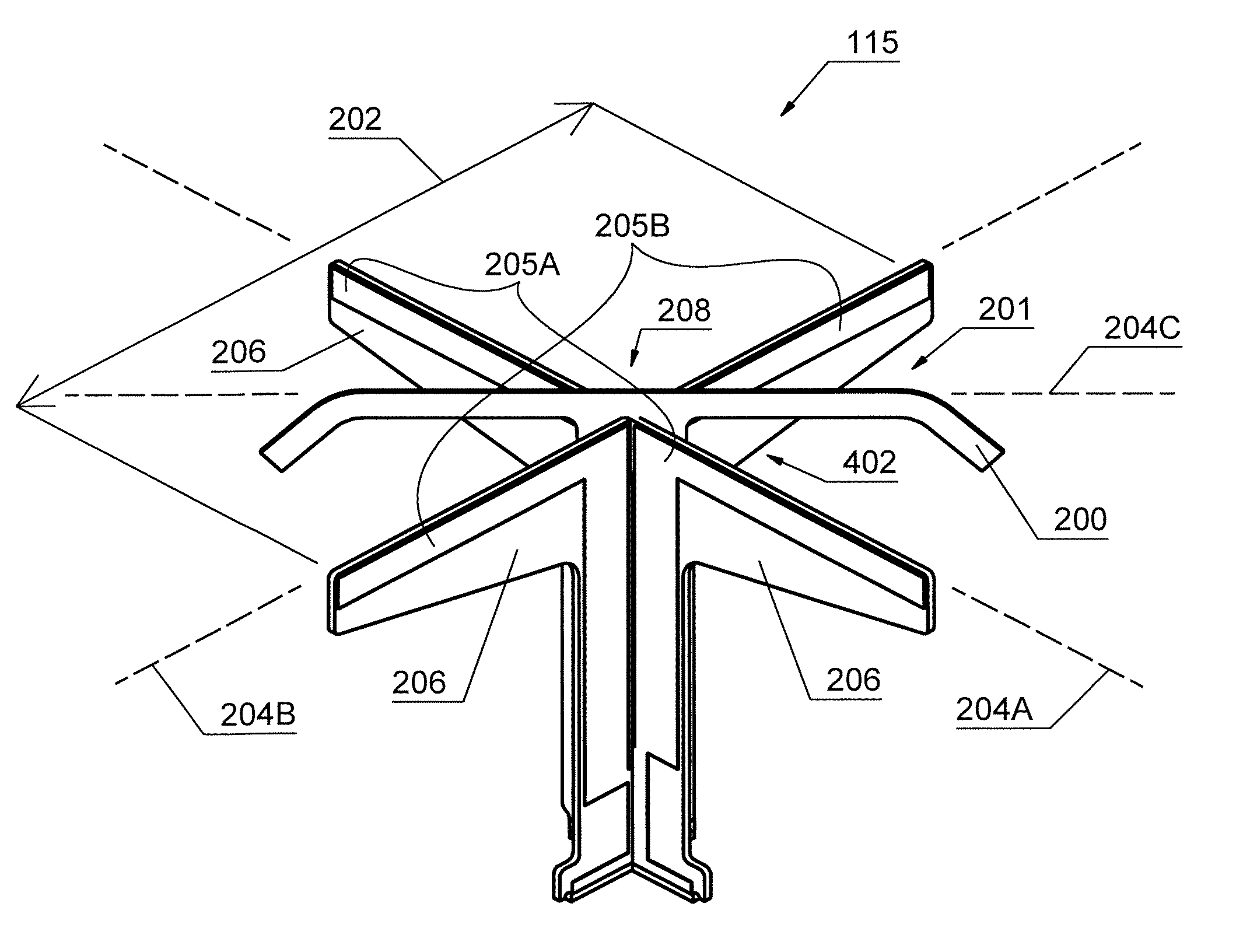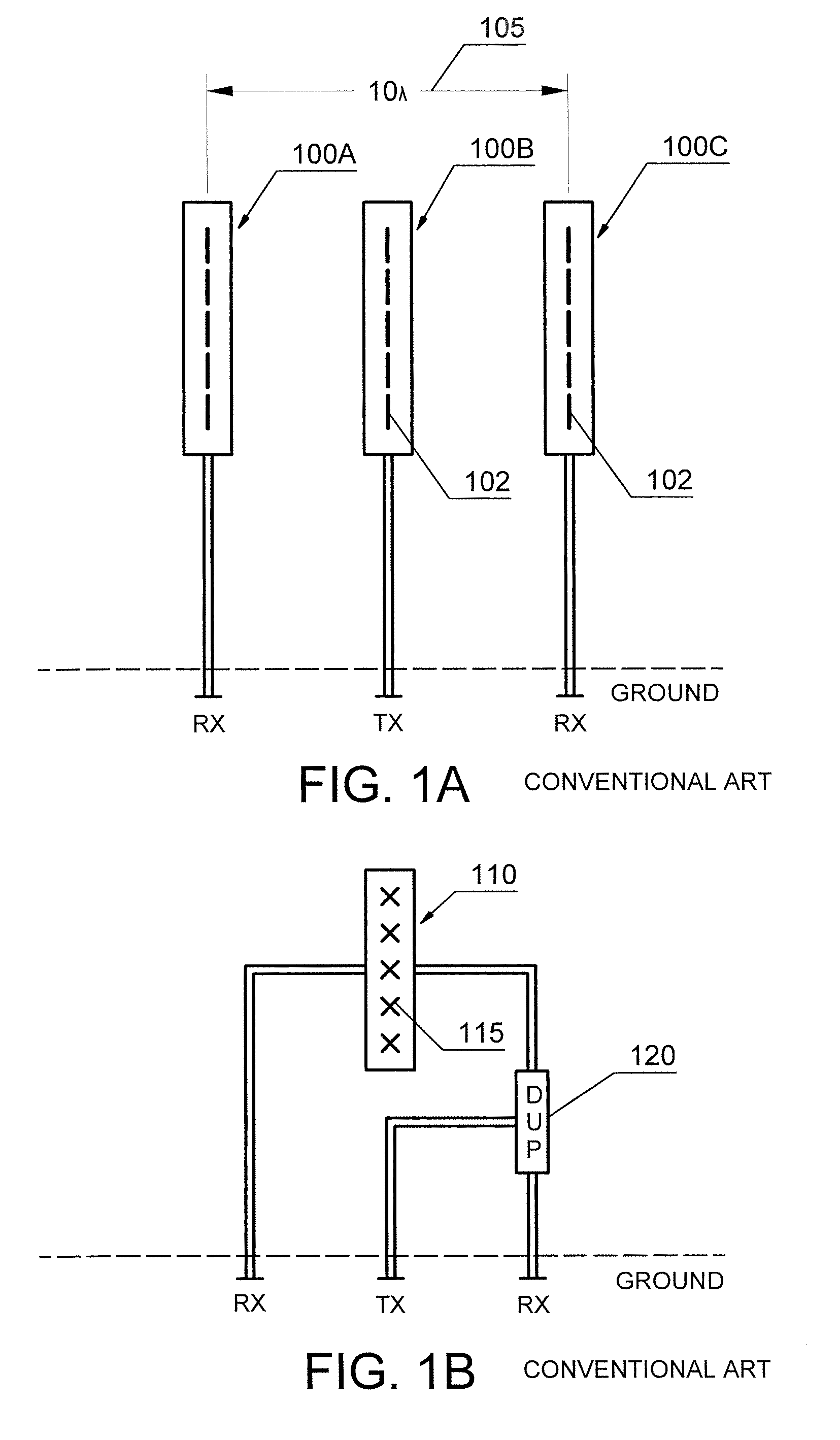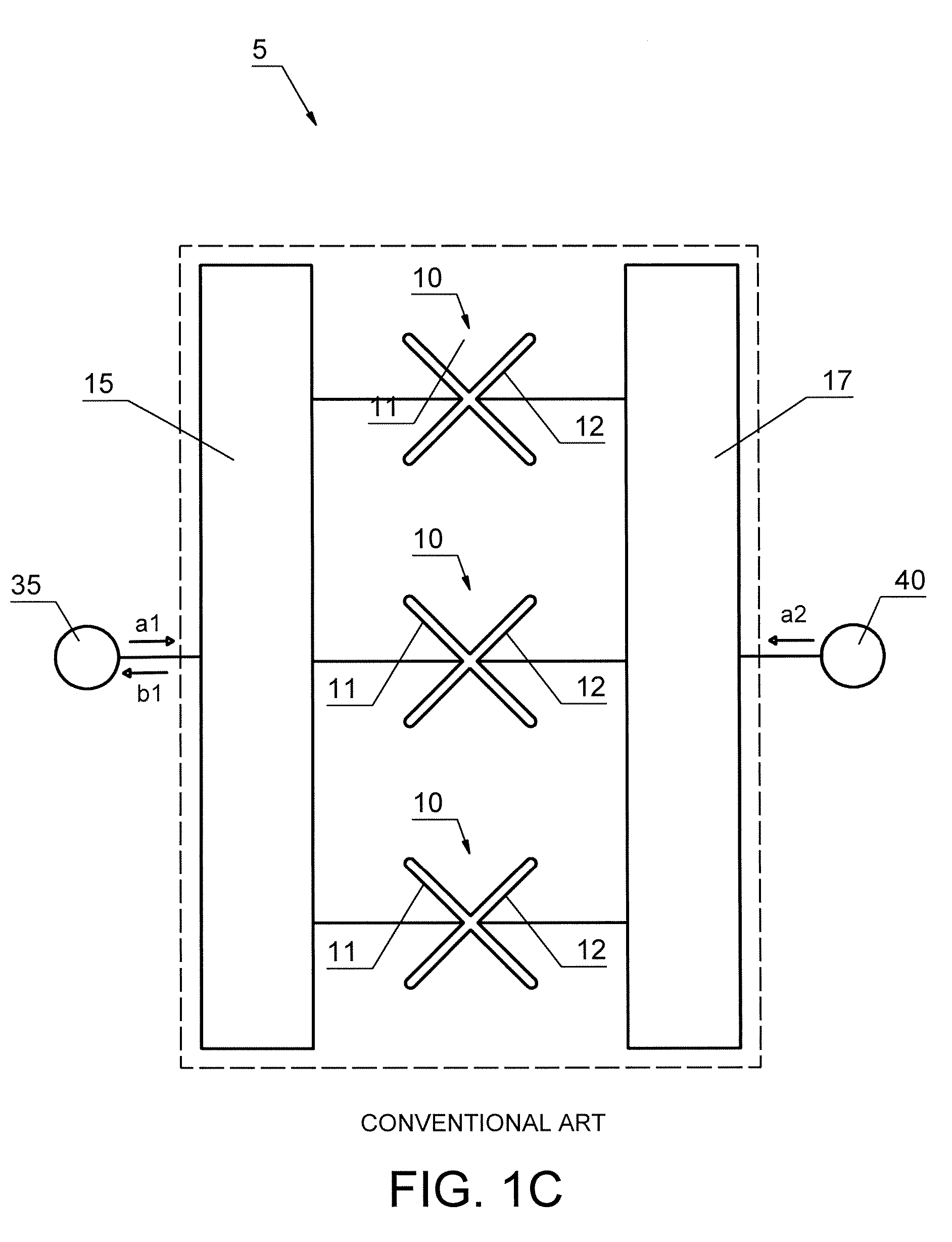Method and system for increasing the isolation characteristic of a crossed dipole pair dual polarized antenna
a dual-polarized antenna and isolation characteristic technology, applied in the direction of polarised antenna unit combinations, antenna details, antennas, etc., can solve the problems of undesirable leakage signal at one of these ports, difficult to achieve physical separation between antenna arrays and/or antenna elements, and often inapplicability, so as to improve the isolation characteristic of rf signals and increase the isolation characteristic of crossed dipole pairs
- Summary
- Abstract
- Description
- Claims
- Application Information
AI Technical Summary
Benefits of technology
Problems solved by technology
Method used
Image
Examples
Embodiment Construction
[0071]A method and system for increasing an isolation characteristic of a crossed dipole pair, dual polarized antenna can include a feedback system comprising a feedback element for generating a feedback signal in response to a transmitted RF signal produced by each radiating elements of a crossed dipole pair, dual polarized antenna. In such an exemplary embodiment, the feedback element may improve the isolation characteristic of RF signals between two different polarizations.
[0072]One inventive aspect of the technology can include positioning of the feedback element relative to the radiators of the crossed dipole pair antenna. The feedback element can “float” above the crossed dipole pair radiator at a distance of approximately 0.007 of a wavelength at an operating frequency of the crossed dipole pair, dual polarized antenna. The length of the feedback element can be between approximately one-eighth and one-half of a wavelength of the operating frequency of the crossed dipole pair ...
PUM
 Login to View More
Login to View More Abstract
Description
Claims
Application Information
 Login to View More
Login to View More - R&D
- Intellectual Property
- Life Sciences
- Materials
- Tech Scout
- Unparalleled Data Quality
- Higher Quality Content
- 60% Fewer Hallucinations
Browse by: Latest US Patents, China's latest patents, Technical Efficacy Thesaurus, Application Domain, Technology Topic, Popular Technical Reports.
© 2025 PatSnap. All rights reserved.Legal|Privacy policy|Modern Slavery Act Transparency Statement|Sitemap|About US| Contact US: help@patsnap.com



